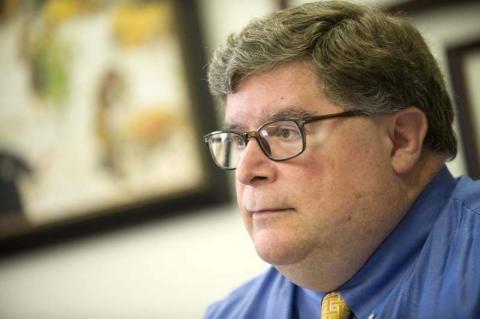When Bill Webster, an assistant commissioner at the General Services Administration, checked into his hotel in Orlando, Fla., last month to attend a conference, the clerk informed him his government-issued travel card was rejected.
Webster, who happens to oversee GSA's travel, motor vehicle and card services division, was seeing one of his program's fraud-prevention controls in action. New software that was monitoring Webster's use of his travel card didn't like what it saw — six fuel purchases in a single day — and it put a hold on the card.
Turns out, Webster's fuel purchases were legit: He rode his Harley Davidson from Washington to Florida, requiring the numerous refueling stops.
But Webster now cites the incident as an example of how feds are making greater use of technology to reduce fraud and abuse of federal fleet, travel and purchase cards.
Much of that improved oversight capability began in 2008 with GSA's transition to a new contract for the cards called SmartPay 2. Under that 10-year contract, GSA asked the banks operating the cards to employ cutting-edge tools to help agencies monitor card use with greater detail and speed.
Officials at GSA and the agency's inspector general's office believe these improvements — combined with a stepped-up effort to hold cardholders more accountable — is helping reduce the amount of fraud occurring on federal card programs.
"We really don't have a lot of bad stuff happen," Webster said. "The controls we have in place are stopping it."
GSA recognized the need to crack down nearly a decade ago, as more government spending moved over to the agency's purchase, travel and fleet cards, Webster said. From 1999 to 2009, the volume of spending on federal purchase, fleet and travel cards doubled from roughly $15 billion to $30 billion.
Amid that increase, there were problems: The Government Accountability Office issued reports in 2002 and 2004 criticizing GSA and other federal agencies for poor oversight that led to spending abuses and waste. Some government workers were found to be using cards to buy lap dances, luxury cruises and high-end stereo systems.
The SmartPay 2 program offers agencies far more detail on what feds are using their cards for. That information not only helps spot fraud, it also helps agencies see where it can buy items in bulk at greater discounts.
The SmartPay software sifts through the 100 million transactions conducted on government credit cards each year, and it produces spending reports and flags questionable items. That information then makes its way to cardholders' direct supervisors, who can investigate the purchases.
Transactions that might raise red flags include purchases made on the weekend or at locations far from an employee's home base, or sales from unusual vendors such as jewelers, liquor stores, sports-ticket outlets or classic car parts dealers. Of course, a human still has to check out specific transactions — for instance, that liquor store purchase might have been a military chaplain buying sacramental wine.
In cases where someone makes multiple similar purchases in a short time, as Webster did on his trip to Orlando, banks may shut off the card to prevent more potential fraud, rather than simply flagging the items.
GSA Inspector General Brian Miller said his office has also invested in new technology and personnel in the last two years to mine this wealth of data and catch and prosecute those who abuse government cards. Those efforts include a new forensic auditing unit to analyze data on transactions, as well as new video-surveillance technology. In the first eight months of fiscal 2010, the IG's office opened 12 investigations into misuse of government purchase cards — up from an average of 3.5 a year from 2006 to 2009.
The ability under SmartPay 2 to quickly identify suspicious activity lets investigators set up stings to gather evidence while crimes are still being committed. Another, more low-tech innovation helps in this effort — a large diagonal green stripe on the back of fleet cards so investigators can see from a distance whether someone's swiping a GSA-issued card at the gas pump.
The inspector general's office issued a report June 1 that highlighted 11 arrests, 12 indictments and 11 people who pleaded guilty in cases of fraud related to the fleet-card program between Oct. 1 and March 31.
"It's all about deterrence," Miller said. "If they are misusing a card, they are going to get caught."
David Shea, head of GSA's office of charge card management, said that cardholders are now noticeably more reluctant to try to game the system.
"I think we have a much more robust capability, but it relies on people following through," Shea said. "The IG did some fine work. When people read these things, it makes them think twice about abusing the cards."
The number of purchases flagged as questionable under SmartPay 2 has declined recently, indicating that federal employees are being more careful, according to Gregory Rowe, GSA's assistant inspector general for investigations.
Veterans of past government purchase-card programs said SmartPay 2 has led to major improvements in oversight.
Agencies can design their own specifications to identify fraud on cards their employees use, said Eva Robinson, director of the public-sector commercial cards division at J.P. Morgan and a former manager of the Navy's purchase-card program.
"I remember … when you were part of a procurement team looking for fraud, waste and abuse, how difficult it was to manually go through paper and records to identify instances and connect the dots," Robinson said. "With the tools now augmenting the card, there are very few instances that could not be caught or at least flagged."

GSA Inspector General Brian Miller warned that those who abuse federal fleet, travel and purchase cards will be caught. (Chris Maddaloni / Staff)
Source: http://www.federaltimes.com/article/20100615/AGENCY05/6150302/1001

